|
I try the addition of a noise floor using a branch that Mineo-san has pushed. As a result, the additional noise to broad-band fluxes makes the probability distribution flatter and more reasonable. I propose a noise floor of 10% as a default value because a possible range of Teff for the 10% noise roughly corresponds to a typical uncertainty of Teff estimate in the F star selection procedure, +/- 400K (Ishigaki-san mentioned).
As I mentioned above, the systematic uncertainties depend on specific bands. Nevertheless, in this ticket, let's adopt a single relative error over all the bands as the first step.
I demonstrate the performance of the noise floor below. The observation data is a visit of 83162 for a DA white dwarf. Figures show marginal probability functions for Teff and log(g) of broad-band SED fit. Each row is each case of additional noise from 0% (top) to 20% (bottom). 10 fibers are shown in a panel, and 50 fibers in total are shown in all fiver panels.
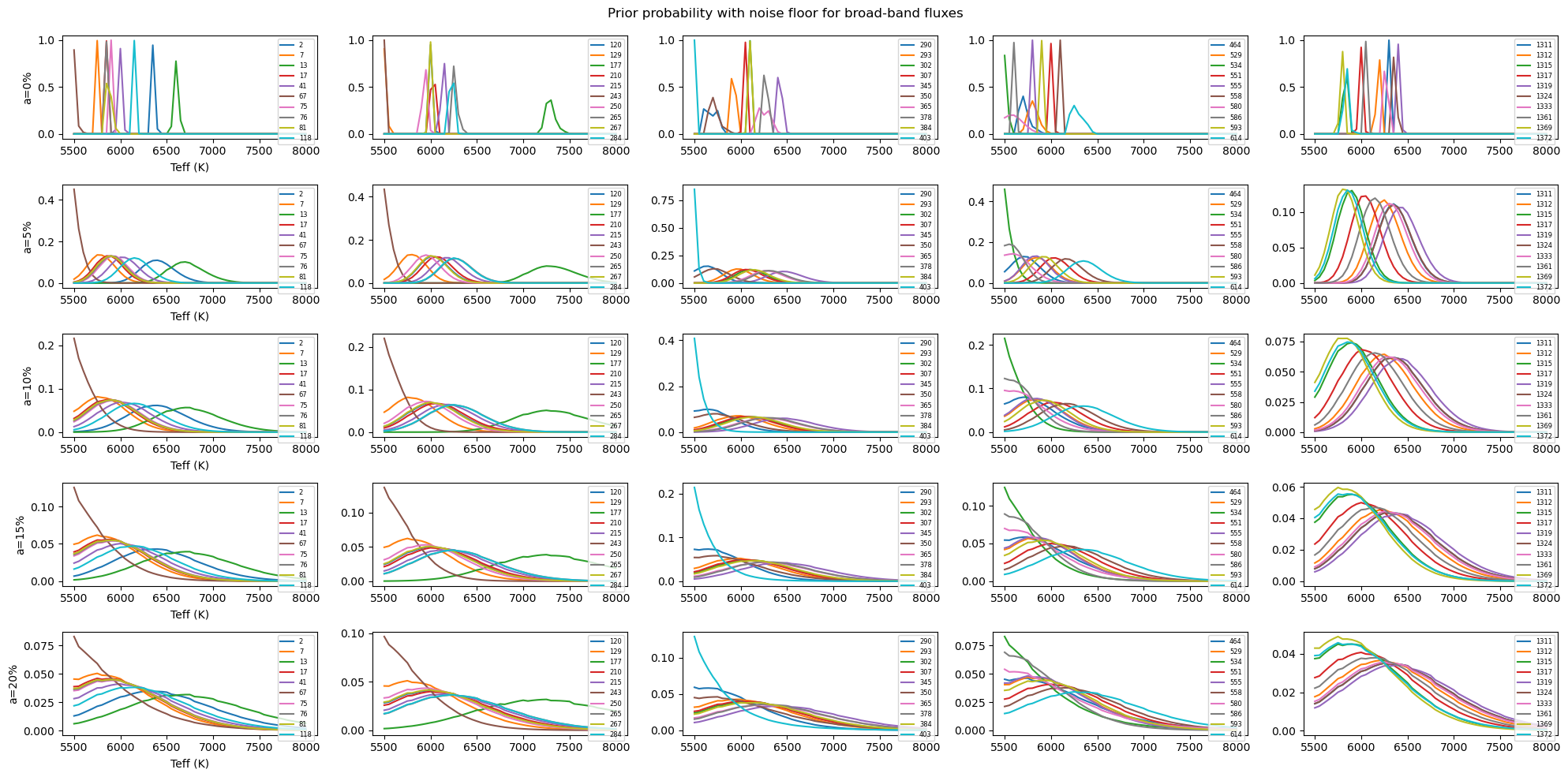
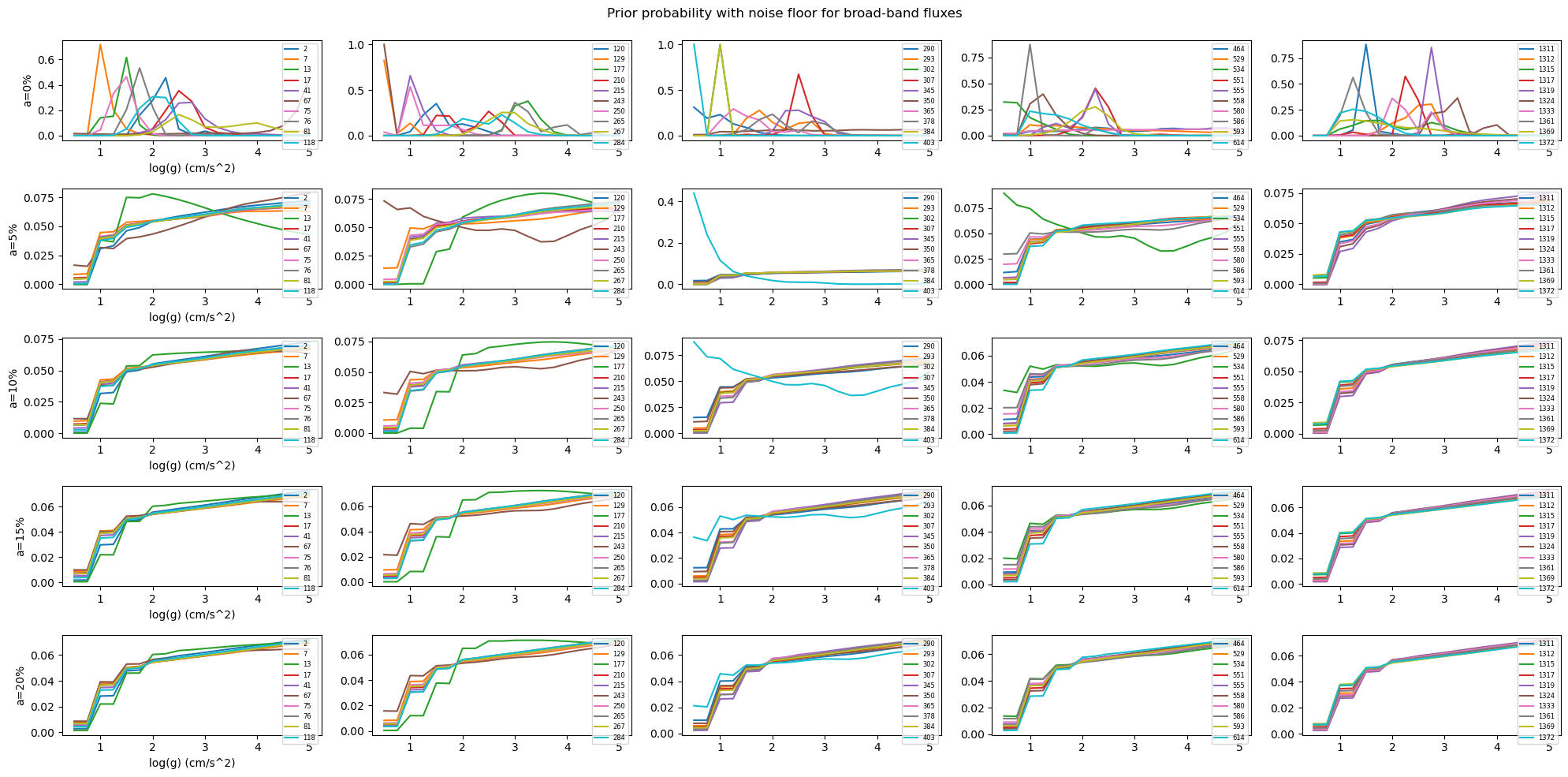
Because we cut off model templates whose prior probabilities are lower than a threshold from spectral fitting, the addition of the noise floor increases the number of models involved with spectral fitting. Consequently, the posterior probability functions change in some cases. Particularly, the log(g) gets closer to the expected values of dwarfs.
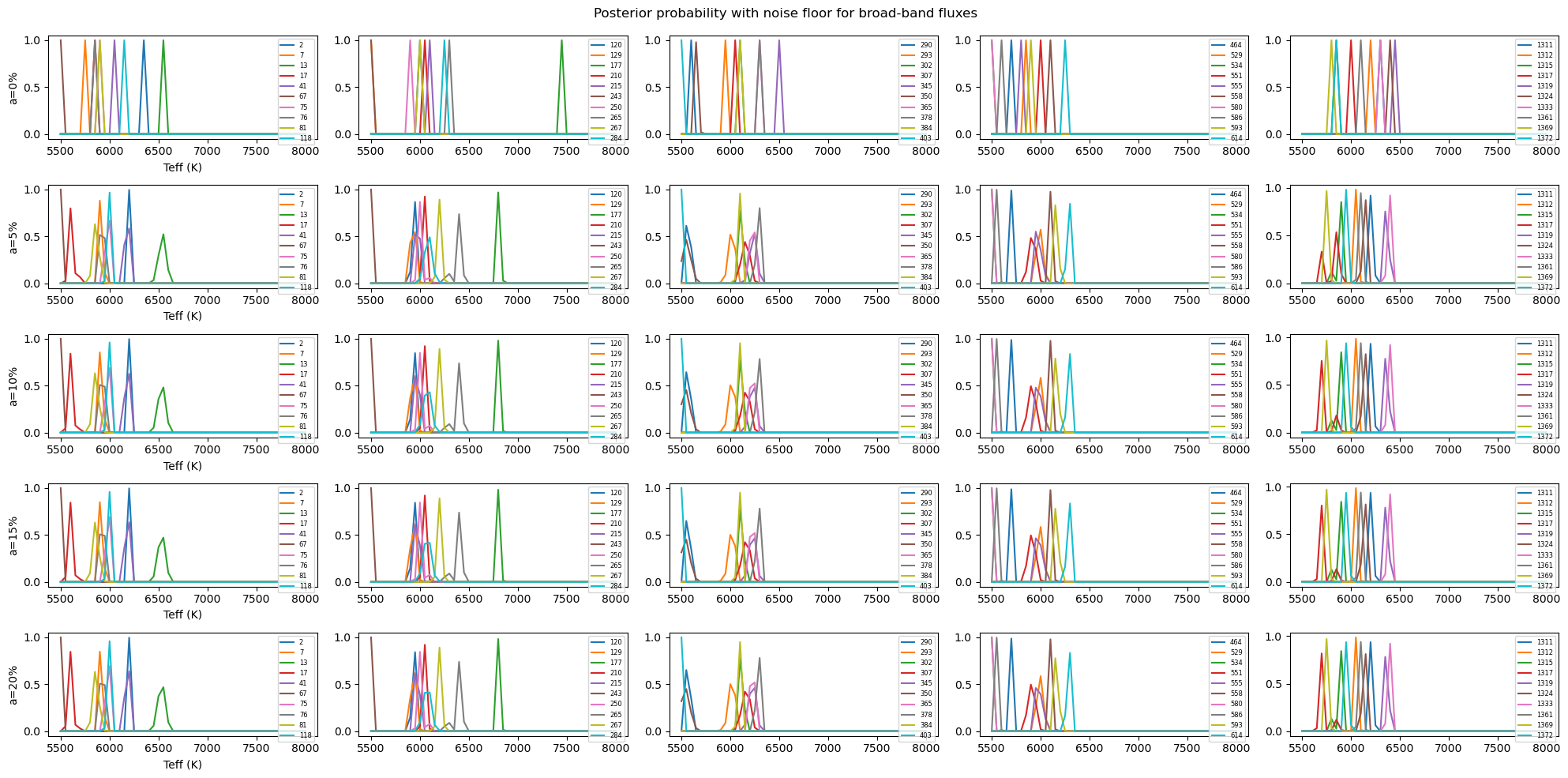
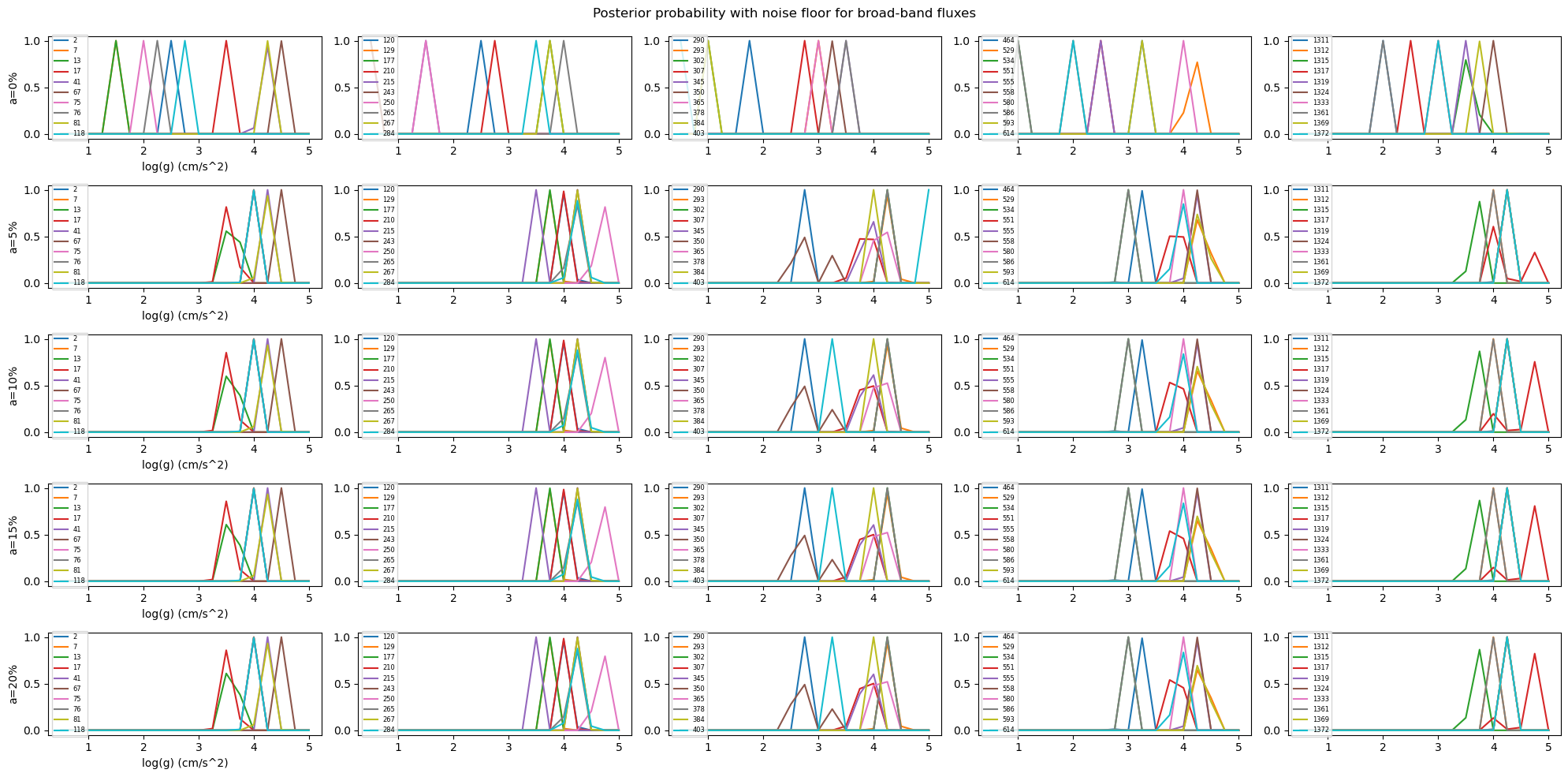
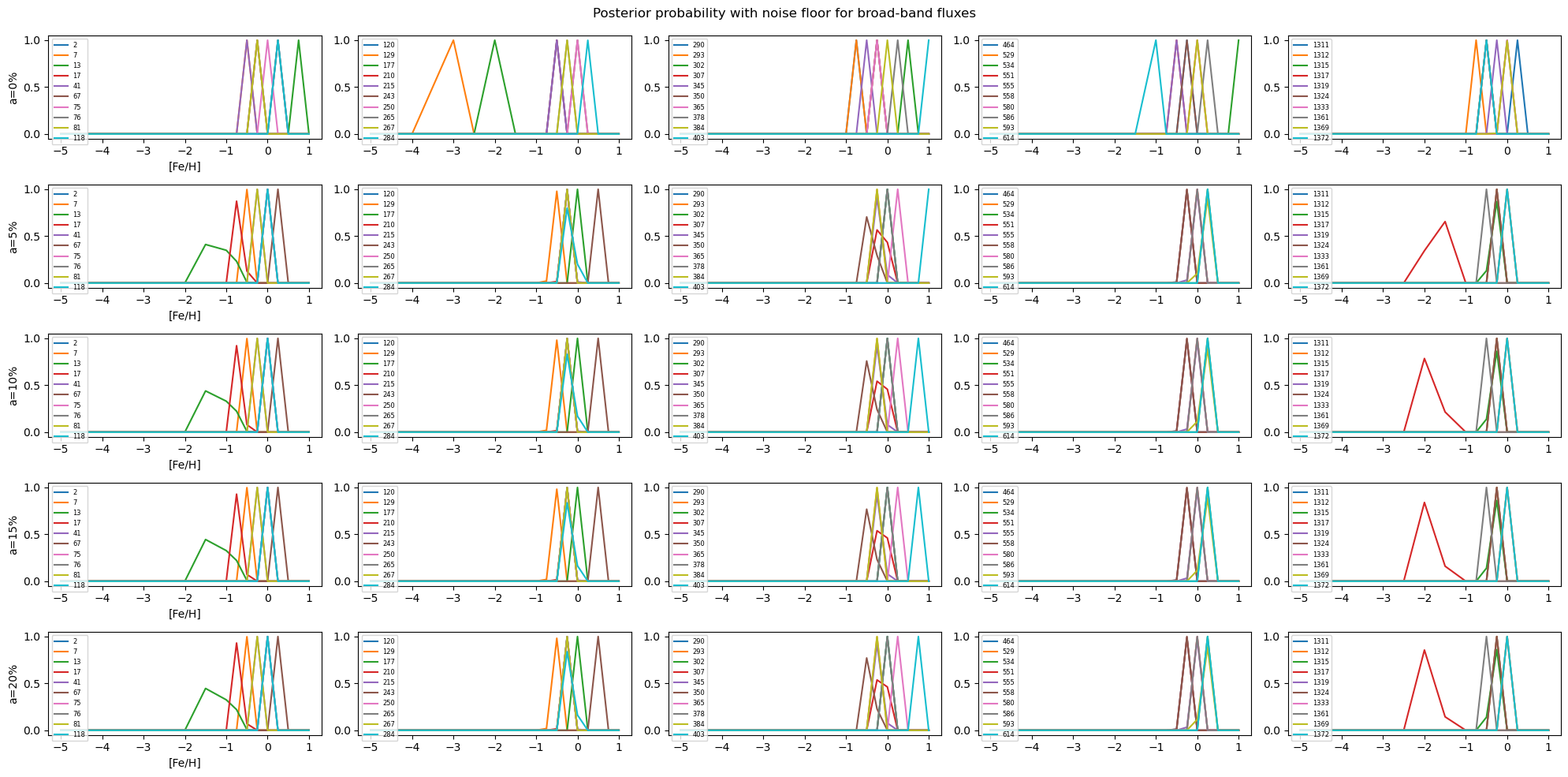
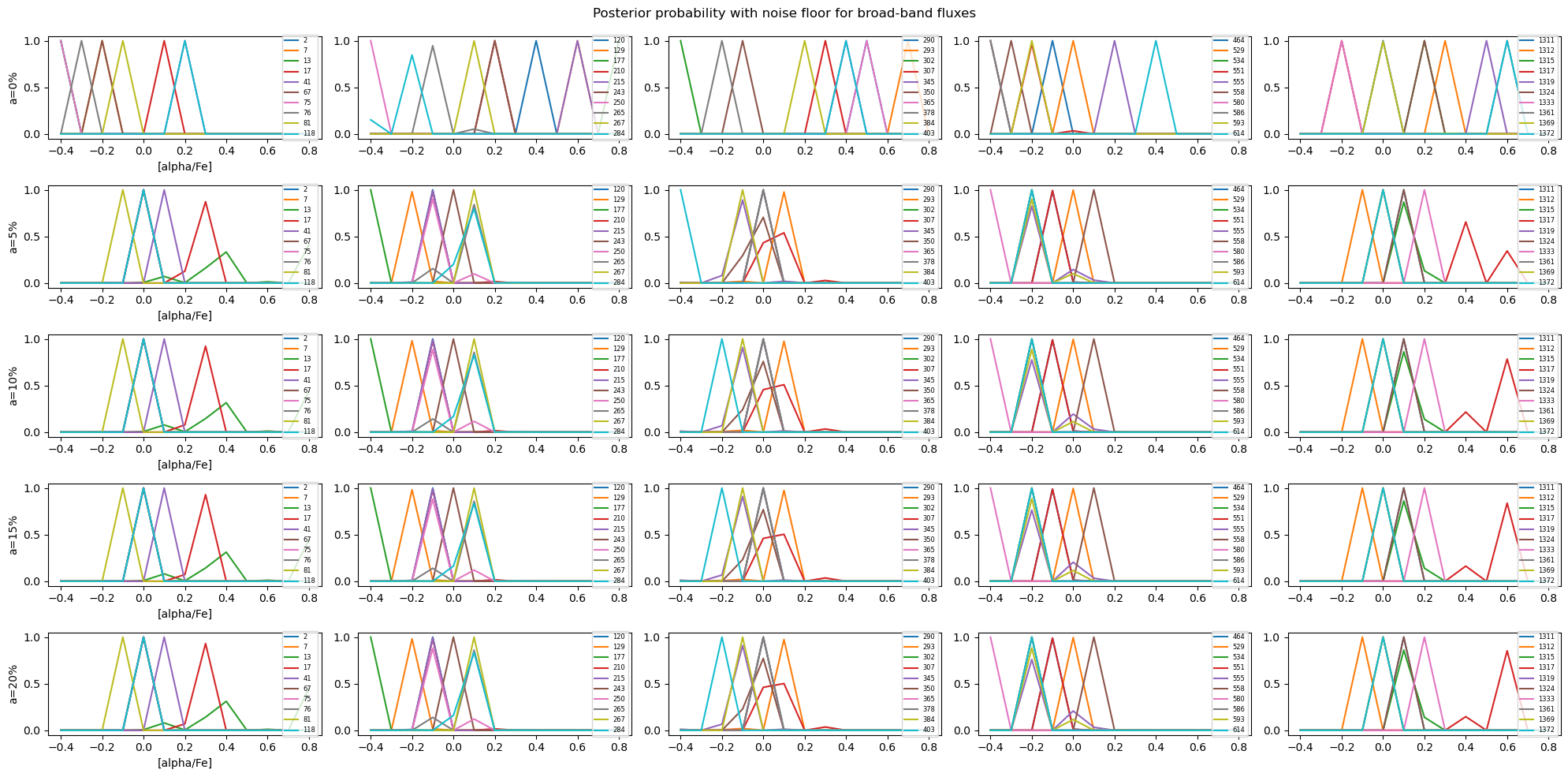
|
|
I have forgot to close this issue. Thanks for reviewing. The branch was merged a month ago. (The right panel says the pull request was declined, but it is false: When I pushed the master branch by mistake before pushing the modified ticket branch, github did not close the pull request for me. I had to press "close" button.)
|